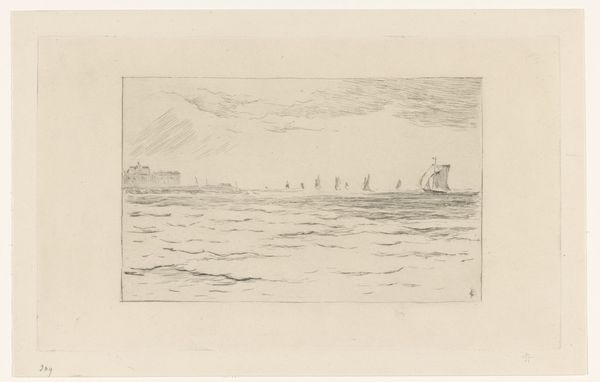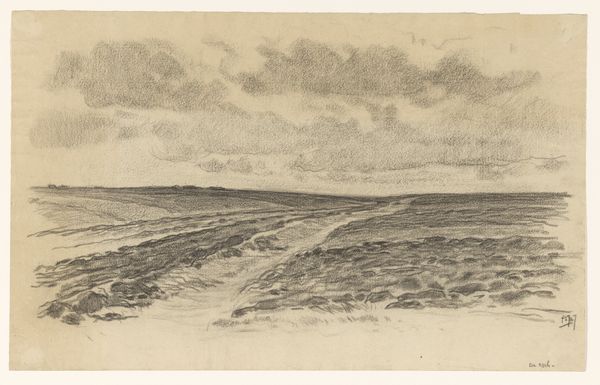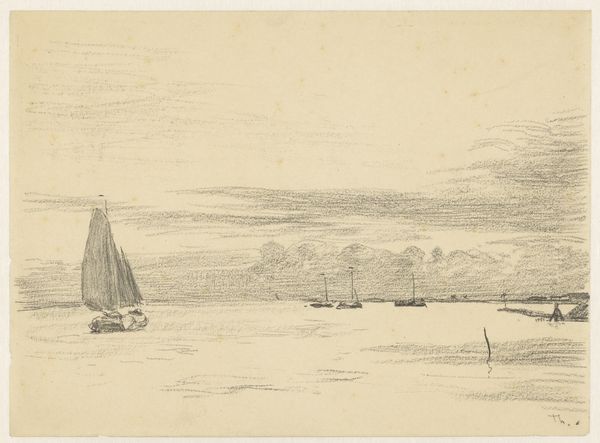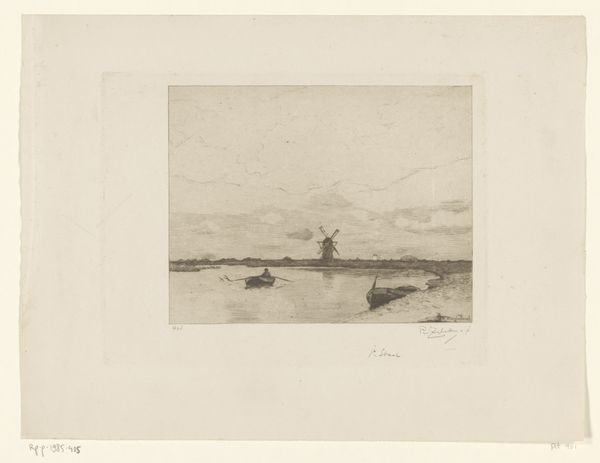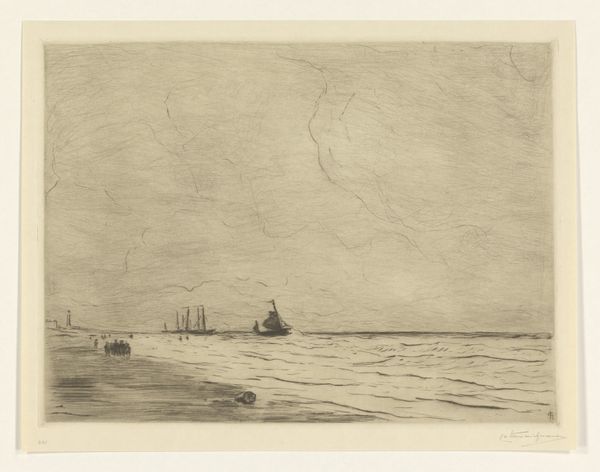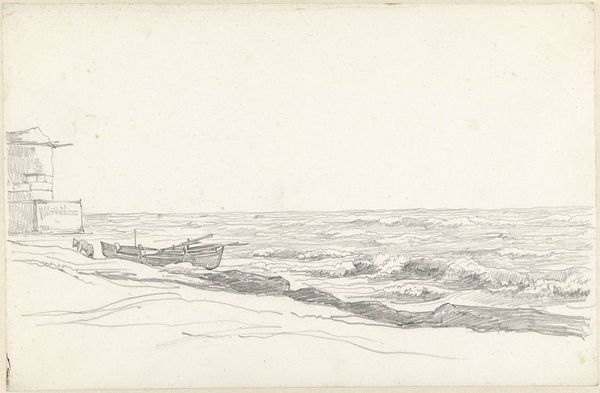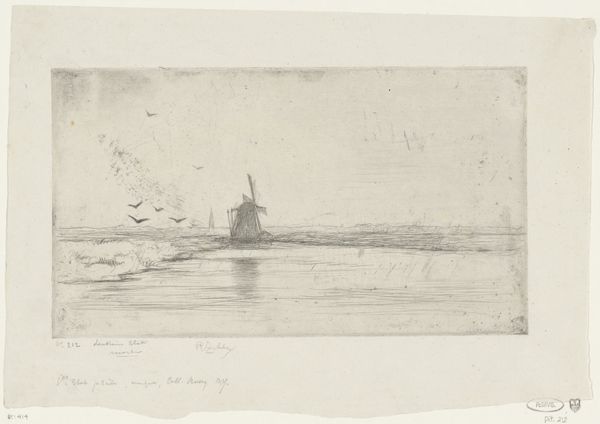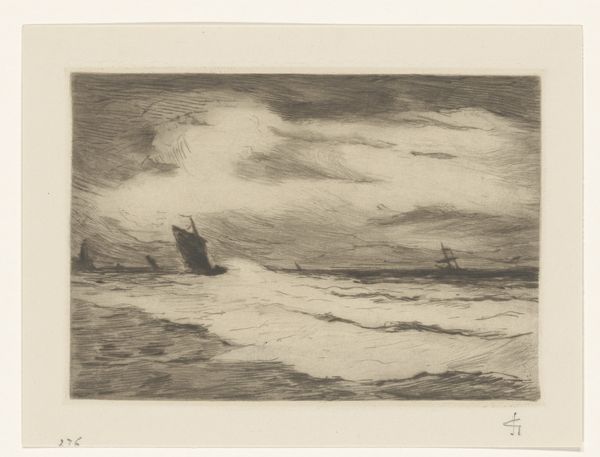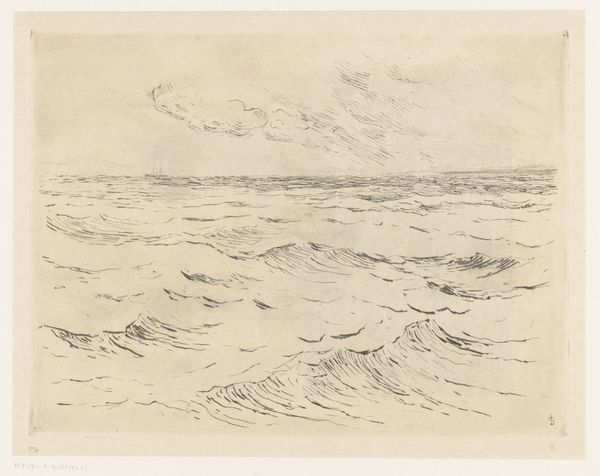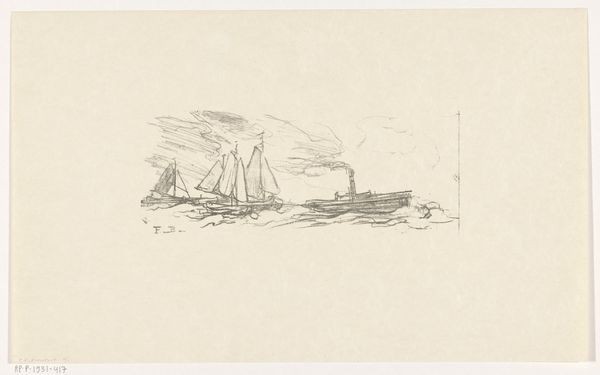
print, etching
# print
#
etching
#
landscape
#
etching
#
pencil drawing
Dimensions: height 169 mm, width 347 mm
Copyright: Rijks Museum: Open Domain
Editor: Here we have Carel Nicolaas Storm van 's-Gravesande's "Kust bij Westkapelle," created sometime between 1889 and 1902. It's an etching, rendered with a rather delicate touch. What stands out to me is the almost industrial feel despite the landscape subject, mainly because of the ships. How would you interpret this piece? Curator: Considering the social and industrial contexts of late 19th-century Netherlands, what strikes me is the labor embedded in both the scene depicted and the production of the etching itself. Notice the two ships; one appears to be a steamship, a product of industrial labor and reliance on coal. Then, consider the etching process – the artist carefully manipulating metal, acid, and ink, creating multiples for wider distribution. It makes you think about the accessibility of art and the means by which landscapes were becoming commodities themselves, doesn’t it? Editor: I never really thought of landscape as a commodity, but that makes a lot of sense! Is the medium itself – the etching – significant here? Curator: Absolutely. Etching allowed for a level of detail and tonal variation previously unseen in printmaking. Its relatively easier process compared to, say, engraving, also opened up printmaking to a broader range of artists. Storm van 's-Gravesande is leveraging this technique, mass production as the consequence. Are we glorifying these vessels as industry marvels? Or highlighting an environmental cost? The materials and processes employed were advancing the economy. What does the piece ultimately say about this coast, in relation to materiality? Editor: It’s amazing to think about all the social and economic factors at play just by looking closely at the materials and the process behind them! Thank you! Curator: And for considering materiality over simple picturesque appreciation! It shifts how we think about the agency embedded in art production and how deeply those traces reveal social production in society.
Comments
No comments
Be the first to comment and join the conversation on the ultimate creative platform.
